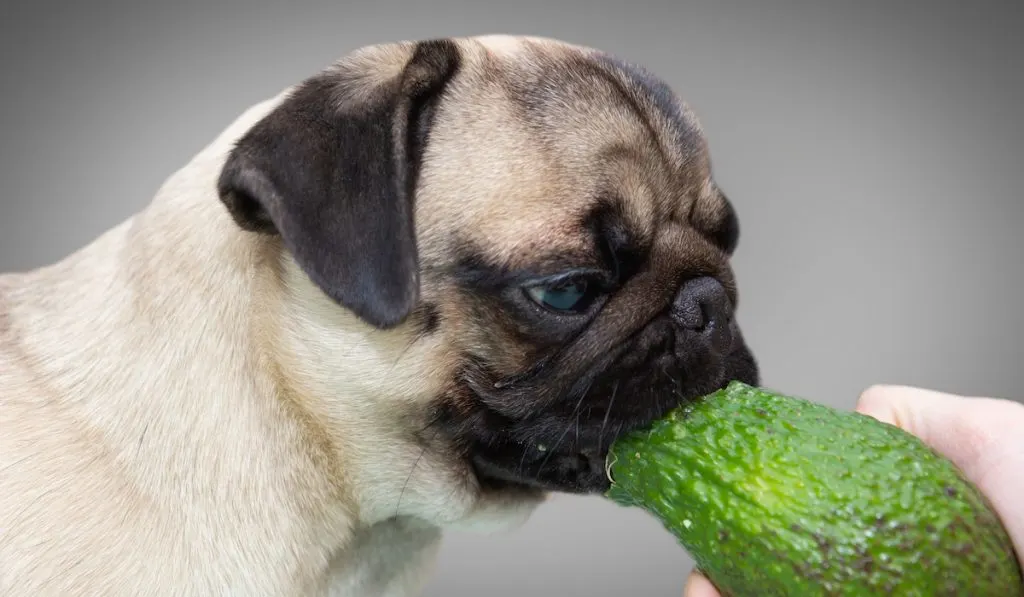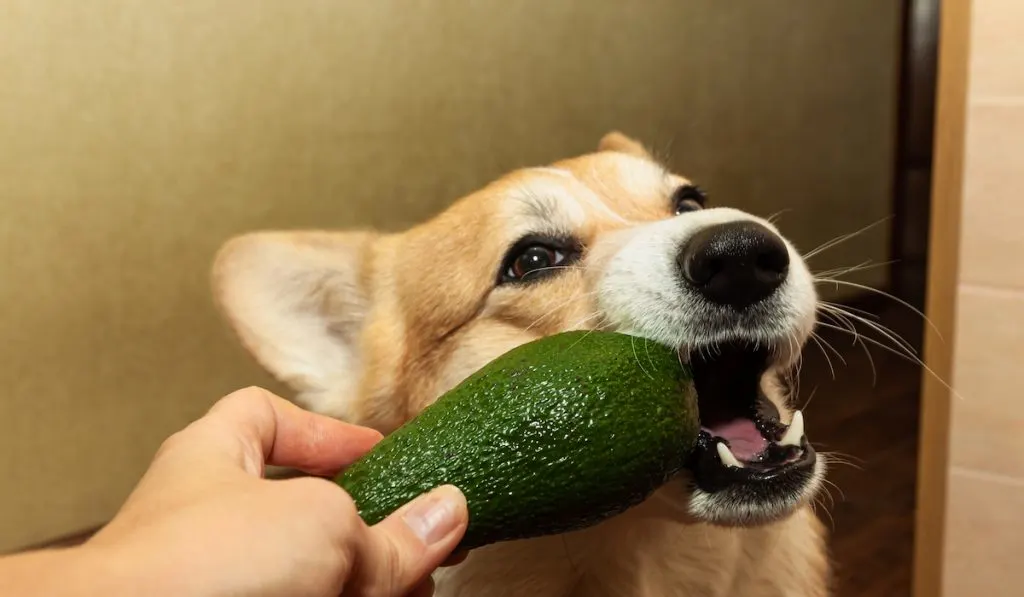Not a lot of people would even consider feeding their dogs guacamole because it can be expensive to make. That, and you will probably want to eat all of it before the thought of sharing with your dog crosses your mind.
Unfortunately, dogs don’t always respect our rules when it comes to what they should and shouldn’t eat. It’s part of what makes them adorable.
They have a mind of their own and if you take your eyes off of your dog for a second, they can jump up on the kitchen counter or your coffee table and demolish your guacamole.
The question is, though, can dogs eat guacamole. Well, sure they can, but is it good for them? Should you be worried if you catch your dog eating that guacamole you worked so hard to prepare for a dinner party?

Avocados – the main ingredient in every guacamole across the world – contains persin, a fungicidal toxin that can be poisonous to some animals. Thankfully, veterinarians say that dogs are more immune to the effects of persin than other animals. However, it can still make them sick.
To be safe, avoid giving your dog avocados and watch them closely if you catch them snacking on something they’re not supposed to.
We’ve put together some tips on what to do to keep your dog away from your guac and what to do if you see any worrying signs after they’ve snuck some.
What Is Persin?
Persin is a chemical toxin that’s found in avocados. It’s in the meat, the pit, and the tree, so you’re going to want to try to keep your dog away from anything having to do with avocados, much less guacamole.
Luckily, persin is only in small contents in the fruit of the avocado tree, so your dog is in much less trouble eating guacamole compared to if they consume any avocado tree leaves or anything like that. One good aspect of avocados is that persin largely disappears as the fruit ripens.
It’s in higher quantities in an avocado when the flesh of the fruit isn’t ripe and goes away as it becomes softer and ready to eat. Most people don’t like to eat hard avocados, so it’s much less of a cause for concern if your dog takes a bite out of your guacamole dish.

What Happens If Your Dog Eats Too Much Persin?
It’s hard to eat enough avocados or guacamole to kill your dog, but it can do a number on them for sure. If they eat too much it can make them throw up and cause other digestive problems.
You’ll be dealing with their diarrhea for a while until it makes its way through their system. In severe cases, eating a lot of persin inflicts heart damage on dogs and can be fatal.
It’s normal to be concerned if your dog eats something they shouldn’t. Talk to your vet if you feel like your dog ate way more guacamole than they should have.
Other Concerns
Besides the worries around persin, there are other concerns around your dog eating guacamole.
Avocados are a high-calorie food, and even though they contain a lot of healthy fats, fiber, and other good things, if you or your dog eat too much guacamole, it can lead to weight gain.
There are already too many dogs walking around way heavier than they should be, so you’re not doing them any favors by feeding them avocados.
If you’re adding onions to your guacamole, too many of them can harm your dog’s red blood cells. Again, they would have to eat a lot of onions to see any adverse side effects, but in serious cases, eating too many onions can make dogs anemic.
Finally, dogs should limit their salt intake, and guacamole can be a very salty food depending on the recipe. If they eat too much salt, they can have problems with urination, diarrhea, vomiting, and other health issues.
Following the general rule that dogs should eat dog food and human food should be for humans only will spare you a lot of puppy health problems. Let your dog know that guacamole is off-limits.
If they can’t be trusted not to snatch some yummy guac off the table when you’re distracted, don’t put it out if they’re on the loose. Either put them in a room or outside when you’re ready to eat some guac and chips.
Another thing to look out for is whether the guac your dog ate was homemade or bought in a store. You have less control over what ingredients are in store-bought guac, and there could be something else in there that could be harmful to them.

What to Do When Your Dog Eats Guacamole?
Anytime your dog eats something they aren’t supposed to, it’s cause for worry. Most of the time, thank goodness, it’s no big deal. Maybe you’ll have a hard time cleaning up after they go to the bathroom outside but that’s about it. In a couple of days, they should be back to normal.
If your dog manages to eat some guacamole, the results are likely to be the same. A bit of stomach trouble or throwing up to get it out of their system.
Sometimes, however, dogs can experience more serious symptoms depending on how much they ate and what other ingredients were in the guacamole. Jalapenos or other spicy peppers can make things especially miserable.
If you’re particularly worried about your dog and what it ate, you can always take them to the vet for a checkup. There, the clinic can run some tests and let you know how to manage the situation. If necessary, they can prescribe some medicine to manage any stomach pains or indigestion after your dog eats guacamole.
One other thing to consider here is the size of your dog. A large German shepherd that sneaks a bit of guacamole isn’t likely to experience much of anything.
But if you come home from an evening out and discover your tiny chihuahua has eaten a big bowl of guacamole, you may want to take a trip to the vet just to be careful.
As with most things related to your dog, monitor symptoms and treat them quickly to make them comfortable and get them back to normal health as soon as possible.
